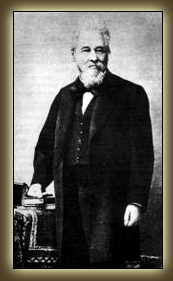
Norbert Rillieux
Norbert Rillieux was born on March 17, 1806 in New Orleans, Louisiana. Norbert was born a free man, although his mother was a slave. His father was a wealthy White engineer involved in the cotton industry. As a child Norbert was educated in the Catholic school system in New Orleans but was sent to Paris, France for advanced schooling.
He studied at the L’Ecole Centrale, the top engineering school in the country and at age 24 became an instructor of applied mechanics at the school, the youngest person to achieve this position. He published a series of papers related to “the Functions and Economic Implications of the Steam Engine.” Eventually, in 1834, Rillieux returned home to his father’s plantation which was now also being used to process and refine sugar.
Sugarcane had become the dominant crop within Louisiana, but the sugar refining process employed at that time was extremely dangerous and very inefficient. Known as the “Jamaica Train”, the process called for sugarcane to be boiled in huge open kettles and then strained to allow the juice to be separated from the cane. The juice was then evaporated by boiling it at extreme temperatures, resulting in granules being left over in the form of sugar. The danger stemmed from the fact that workers were forced to transport the boiling juice from one one kettle to another, chancing the possibility of suffering severe burns. It was also a very costly process considering the large amount of fuel needed to heat the various kettles.
During the 1830s, France witnessed the introduction of the steam-operated single pan vacuum . The vacuum pan was enclosed in an area with the air removed (this was necessary because liquids can boil at a lower temperature in the absence of air than with air present, thus costing less). Rillieux decided to improve greatly on this efficiency by including a second and later a third pan, with each getting heating by its predecessor.
In 1833, Rillieux was approached by a New Orleans sugar manufacturer named Edmund Forstall. Because numerous sugar producers had received complaints about product quality, Forstall persuaded Norbert to become the Chief Engineer of the Louisiana Sugar Refinery. Unfortunately, almost as soon as Norbert took the job, an intense feud developed between Forstall and his father, Vincent Rillieux. Out of loyalty to his father, Norbert left his position with the company. A few years later, Norbert was hired by Theodore Packwood to improve his Myrtle Grove Plantation refinery. In doing so he employed his triple evaporation pan system which he patented in 1843. It was an enormous success and revolutionized the sugar refining industry improving efficiency, quality and safety.
In the 1850s, New Orleans was suffering from an outbreak of Yellow Fever, caused by disease-carrying mosquitos. Rillieux devised an elaborate plan for eliminating the outbreak by draining the swamplands surrounding the city and improving the existing sewer system, thus removing the breeding ground for the insects and therefore the ability for them to pass on the disease. Unfortunately, Edmund Forstall, Norbert’s former employer was a member of the state legislature and spoke out against the plan. Forstall was able to turn sentiment against Rillieux and the plan was rejected. Disgusted will the racism prevalent in the south as well as the frustration of local politics Rillieux eventually left New Orleans and moved back to France (ironically, after a number of years in which time the Yellow Fever continued to devastate New Orleans, the state legislature was forced to implement an almost identical plan introduced by white engineers.
After returning to France, Rillieux spent much of his time creating new inventions and defending his patents as well as traveling abroad. Rillieux died on October 8, 1894 and left behind a legacy of having revolutionized the sugar industry and therefore changing the way the world would eat.
Source: The Inventive Spirit of African Americans (Patricia Carter Sluby).